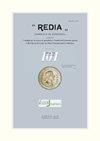HAPLOTYPE DIVERSITY OF STEINERNEMA FELTIAE (NEMATODA: STEINERNEMATIDAE) IN EURASIA
IF 0.8
4区 生物学
Q3 ZOOLOGY
引用次数: 0
Abstract
Phylogenetic analysis of ITS rDNA sequences of the entomopathogenic nematode Steinernema feltiae Filipjev, 1934 (Wouts, Mráček, Gerdin and Bedding, 1982) was used to infer intraspecific genetic variability of this rhabditid nematode. Nucleotide intraspecific differences among S. feltiae isolates reached the level of 19 base pairs per ITS rDNA region, i.e. up to 2.9%. Several weakly or moderately supported intraspecific clades were detected. Sicilian and Swiss isolates of S. feltiae were found clustering together. Swiss strain ‘St. Bernard’ has been isolated on the St. Bernardino mountain pass in Switzerland in 2000. Phylogenetic relationships among S. feltiae isolates were inferred by using three different methods (maximum parsimony, neighbor joining and maximum likelihood). The topologies of the phylogenetic trees were identical and thus only ML tree is presented. ML tree revealed that S. feltiae isolates from Israel and Armenia grouped at the basal position of the tree, while in the spanning network obtained with POPART software, Iranian and Ukrainian isolates were the closest to the outgroup. In all methods of analyses, the European and Siberian strains of S. feltiae occupied terminal positions. Thus, further studies on the intraspecific genetic variability of entomopathogenic nematodes is needed.欧亚大陆麻线虫的单倍型多样性
对昆虫病原线虫Steinernema feltiae Filipjev, 1934 (Wouts, Mráček, Gerdin and Bedding, 1982)的ITS rDNA序列进行系统发育分析,推断该横纹肌线虫的种内遗传变异。核苷酸种内差异美国feltiae隔离达到每rDNA地区19个碱基对的水平,即2.9%。几个弱或适度支持种内演化支被检测到。发现西西里和瑞士分离株聚集在一起。瑞士的St。伯纳德于2000年在瑞士的圣贝纳迪诺山口被隔离。采用最大简约法、邻居联结法和最大似然法对不同分离株的系统发育关系进行了推测。系统发育树的拓扑结构相同,因此只给出ML树。ML树显示,来自以色列和亚美尼亚的S. feltiae分离株聚集在树的基础位置,而在POPART软件获得的跨越网络中,伊朗和乌克兰分离株最接近外群。在所有的方法分析,欧洲和西伯利亚的美国feltiae占领终端位置。因此,需要进一步研究昆虫病原线虫的种内遗传变异性。
本文章由计算机程序翻译,如有差异,请以英文原文为准。
求助全文
约1分钟内获得全文
求助全文
来源期刊

Redia-Giornale Di Zoologia
ZOOLOGY-
CiteScore
1.20
自引率
20.00%
发文量
18
审稿时长
>12 weeks
期刊介绍:
Redia supports its long history of basic and applied research in entomology and invertebrate zoology in the field of crop and forest tree protection responding at the same time to the increasing need of innovation and technological improvement.
 求助内容:
求助内容: 应助结果提醒方式:
应助结果提醒方式:


